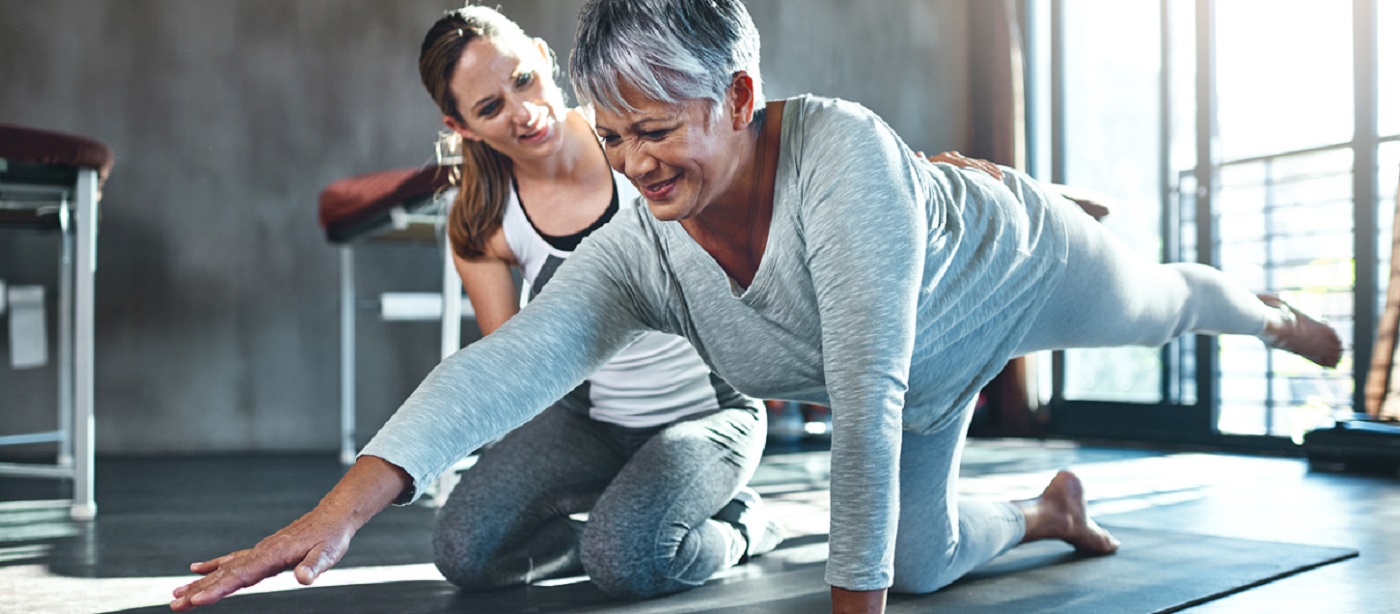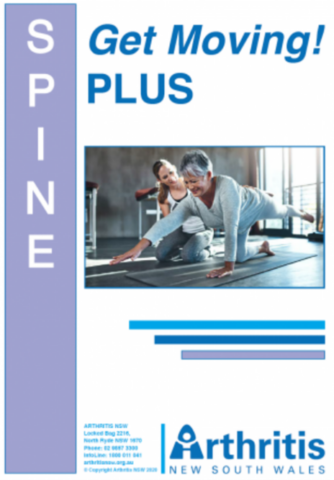Q: I have arthritis in my spine. Other than pain, I can often feel stiff and have trouble bending down to the floor from a standing position or taking a deep breath. Do you know any good exercises to help with my stiffness?
A: Thank you for your question, and yes, I do! Please read on.
Background: Arthritis of the Spine
Although there are many different types of arthritis that can affect the spine, they generally fall into one of two categories:
- Mechanical (e.g., osteoarthritis)
- Inflammatory (e.g., rheumatoid arthritis)
Osteoarthritis
Surprise, surprise, osteoarthritis (OA) is the most common cause of arthritis in spine. In the back, OA commonly affects the facet joints, which are found on the back part of the vertebrae in the spine. The facet joint is the articulation of the above and below vertebrae (see Figure 1). As the cartilage wears between the facet joints, it can cause pain and stiffness in the back. People with OA tend to have mechanical pain such as minimal pain in the morning, worse pain with movement (flexion, extension, rotation), and improvement with rest. In some cases, OA of the spine can lead to further complications that involve the disc and nerves, bony growths (spurs), and stenosis (narrowing of the spinal canal).

Figure 1 Facet Joint
Spondyloarthritis
Spondyloarthritis (SpA) is an umbrella term for several different types of arthritis that have certain traits and symptoms in common; namely, that they are types of autoimmune/autoinflammatory conditions that cause inflammation in the spine (although not limited to the spine, other joints can be affected too). Arthritis types in this category includes axial spondyloarthritis, psoriatic arthritis, reactive arthritis, enteropathic arthritis, and undifferentiated spondyloarthritis. Pain is often caused by flares of inflammation, and/or structural deformities or lesions that may occur may also be the cause of pain.
Spondyloarthritis not only affects the joint and related tissues (synovial membrane and fluid, cartilage etc) these conditions can also affect the ligaments and tendons of the spine- particularly where they attach to the spine. Furthermore, in some cases, as part of the disease progression and an overactive immune system, new bone can grow between and around the vertebrae, causing abnormal fusion and increases the risk for spinal fracture.
*Exercises to Promote Mobility and Breathing
The good thing about the exercises included in this blog is that it doesn’t matter what type of arthritis you have, you will likely find benefit from most or all of them!
Many exercises below have been taken from the Get Moving! PLUS resource developed by Arthritis NSW, which is available free on our website here.
Please click on the link provided to see the exercises.
- Gentle flexion, extension, side to side and rotations
- Chin tucks
- Assisted rotations
Thoracic (mid back)
- Seated rotation
- Cat/cow
- Superman
- Open book
- Quadruped rotation
- Cobra hold
Lumber (low back)
- Lying rotation – dropping knees from side to side
Full Spine
- Roll downs – breathing normally
Click here to see above exercises in Get Moving! PLUS “Spine” PDF booklet.
If you have any questions about the exercises, please email kkeane@arthritistas.org.au
*if you are unsure on whether or not you should perform these exercises, please seek advice you’re your health care provider. If you are experiencing a flare, please focus on pain and symptom management and once the flare has dissipated you can try these movements.
References
https://creakyjoints.org/symptoms/arthritis-in-back/#:~:text=Axial%20spondyloarthritis%20(axSpA)%20is%20the,and%20ankylosing%20spondylitis%20(AS)
https://www.spineuniverse.com/conditions/spinal-arthritis/ankylosing-spondylitis/ankylosing-spondylitis-type-spinal-inflammatory
Author: Kat Keane, Health Educator, Arthritis NSW
Date: 1/9/2022

